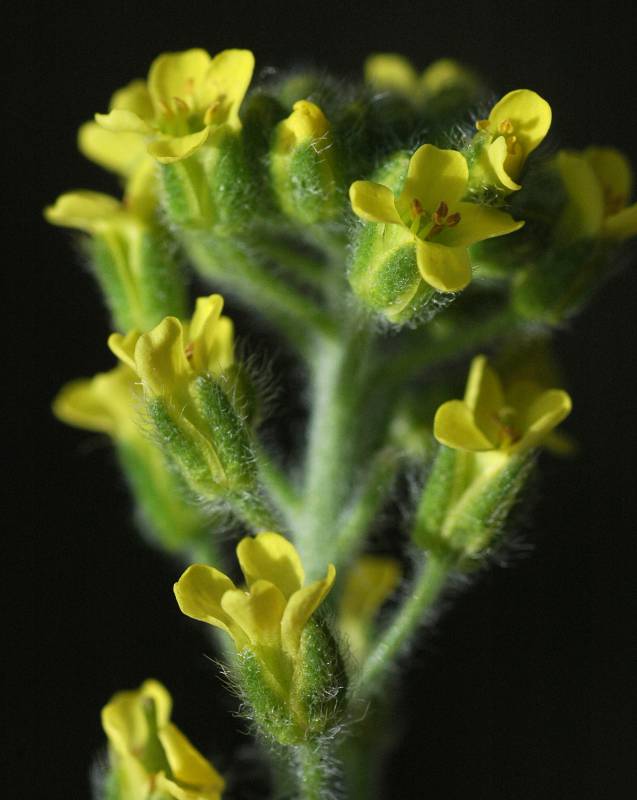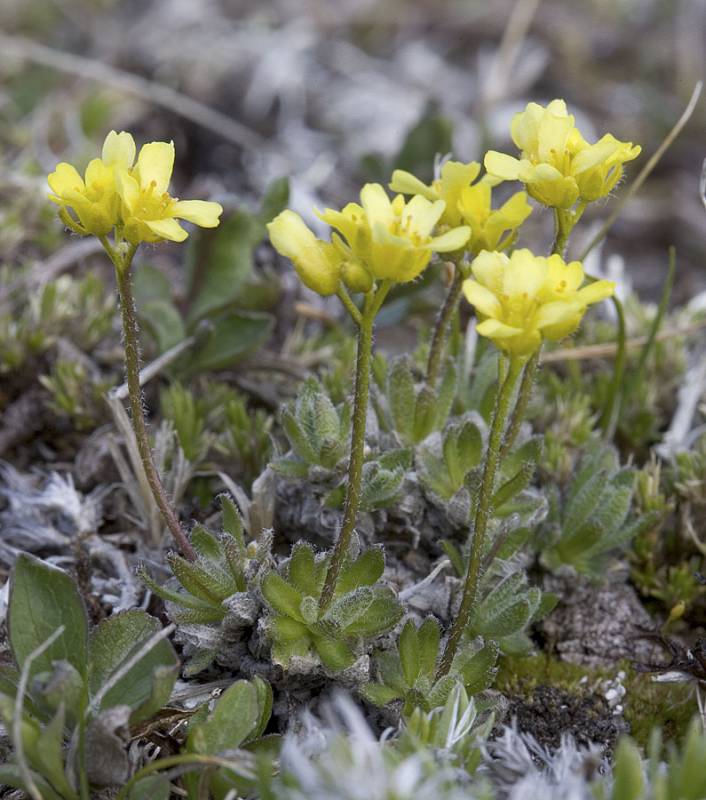Draba aurea
Draba incerta
golden draba whitlow-grass
whitlow-wort, Yellowstone draba whitlow-wort
Basal leaves forming rosettes, petioles ciliate with simple trichomes to 0.8 mm, blades narrower toward base, 1-3.7 cm long and 2-7 mm broad, margins entire or finely toothed, pubescent above and beneath, stalked trichomes with up to 8 rays, 0.2-0.5 mm;
cauline leaves usually 5-20, sessile, ovate to lanceolate or sometimes narrower toward base, margins entire or dentate, pubescent above and beneath, upper surface sometimes with simple trichomes.
Leaves alternate, somewhat imbricate, linear-oblanceolate, 7-13 mm. long and 1.5-3.5 mm. broad, the margins with simple to branched hairs, the under surface pubescent with irregularly branched hairs, with some branched along both sides of the hair stem.
Inflorescence racemose, generally 18-52 flowered, rarely up to 72 flowered, usually bracteate proximally;
rachis rigid, pubescence same as stem; fruiting pedicels spreading-ascending to nearly erect, not curved, 3-13 mm, same pubescence as stem;
sepals 4, green to yellowish, oblong, 2.2-3 mm, pubescent with simple and branched trichomes;
petals 4, yellow, slender and narrower toward base, 3.5-5 mm long and 1.5-2.5 mm broad;
anthers approximately 0.5 mm, ovate.
Inflorescence racemose; pedicles about equaling the fruit;
sepals 4, erect;
petals 4, yellow, fading to white, 4-5 mm. long;
stamens 6;
style 0.4-1 mm. long.
Siliques, 6-17 mm long and 2-3.5 mm broad, often partially appressed to rachis, linear-lanceolate to lanceolate or may be slender and narrower toward base, twisted or plane, flattened;
valves pubescent with simple trichomes and 2-4-rayed trichomes on short stalks;
ovaries containing 28-38 or more ovules;
seeds oblong, 0.9-1.3 mm long and about half as wide.
Silicles ovate-lanceolate to elliptic, scarcely inflated, 6-10 mm. long and 2.5-3.75 mm. broad, usually pubescent with coarse, short, stiff, simple or branched hairs.
Draba aurea
Draba incerta
- Local floras:
BC,
OR,
WA
- Local Web sites:
Flora NW,
PNW Herbaria
WildflowerSearch
iNaturalist (observations)
USDA Plants Database
- LBJ Wildflower Center
- SEINet
- Plants of the World Online
- Encyclopedia of Life
- Wikipedia
- Google Image Search



